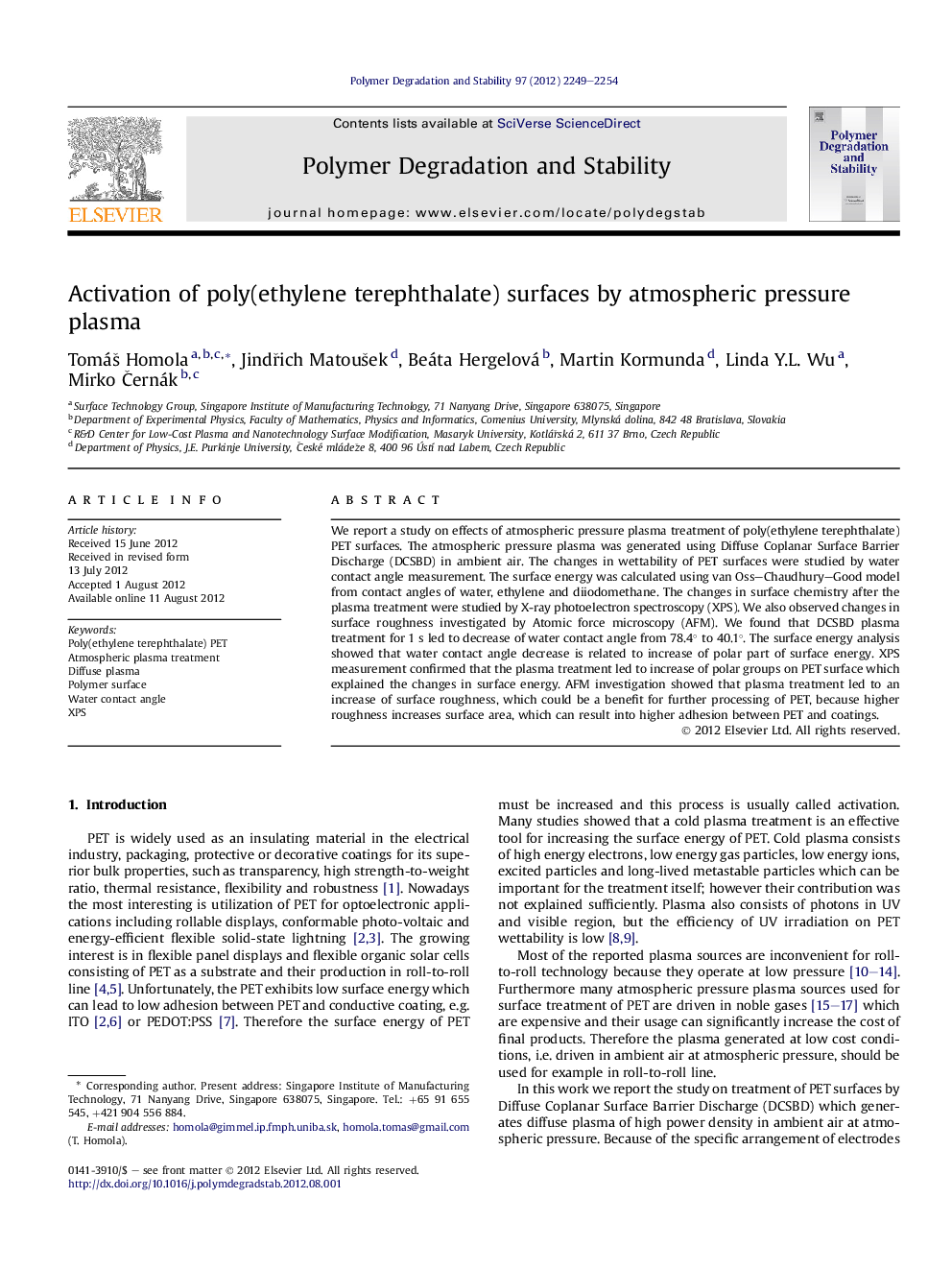| Article ID | Journal | Published Year | Pages | File Type |
|---|---|---|---|---|
| 5202571 | Polymer Degradation and Stability | 2012 | 6 Pages |
Abstract
We report a study on effects of atmospheric pressure plasma treatment of poly(ethylene terephthalate) PET surfaces. The atmospheric pressure plasma was generated using Diffuse Coplanar Surface Barrier Discharge (DCSBD) in ambient air. The changes in wettability of PET surfaces were studied by water contact angle measurement. The surface energy was calculated using van Oss-Chaudhury-Good model from contact angles of water, ethylene and diiodomethane. The changes in surface chemistry after the plasma treatment were studied by X-ray photoelectron spectroscopy (XPS). We also observed changes in surface roughness investigated by Atomic force microscopy (AFM). We found that DCSBD plasma treatment for 1 s led to decrease of water contact angle from 78.4° to 40.1°. The surface energy analysis showed that water contact angle decrease is related to increase of polar part of surface energy. XPS measurement confirmed that the plasma treatment led to increase of polar groups on PET surface which explained the changes in surface energy. AFM investigation showed that plasma treatment led to an increase of surface roughness, which could be a benefit for further processing of PET, because higher roughness increases surface area, which can result into higher adhesion between PET and coatings.
Related Topics
Physical Sciences and Engineering
Chemistry
Organic Chemistry
Authors
TomáÅ¡ Homola, JindÅich MatouÅ¡ek, Beáta Hergelová, Martin Kormunda, Linda Y.L. Wu, Mirko Äernák,
